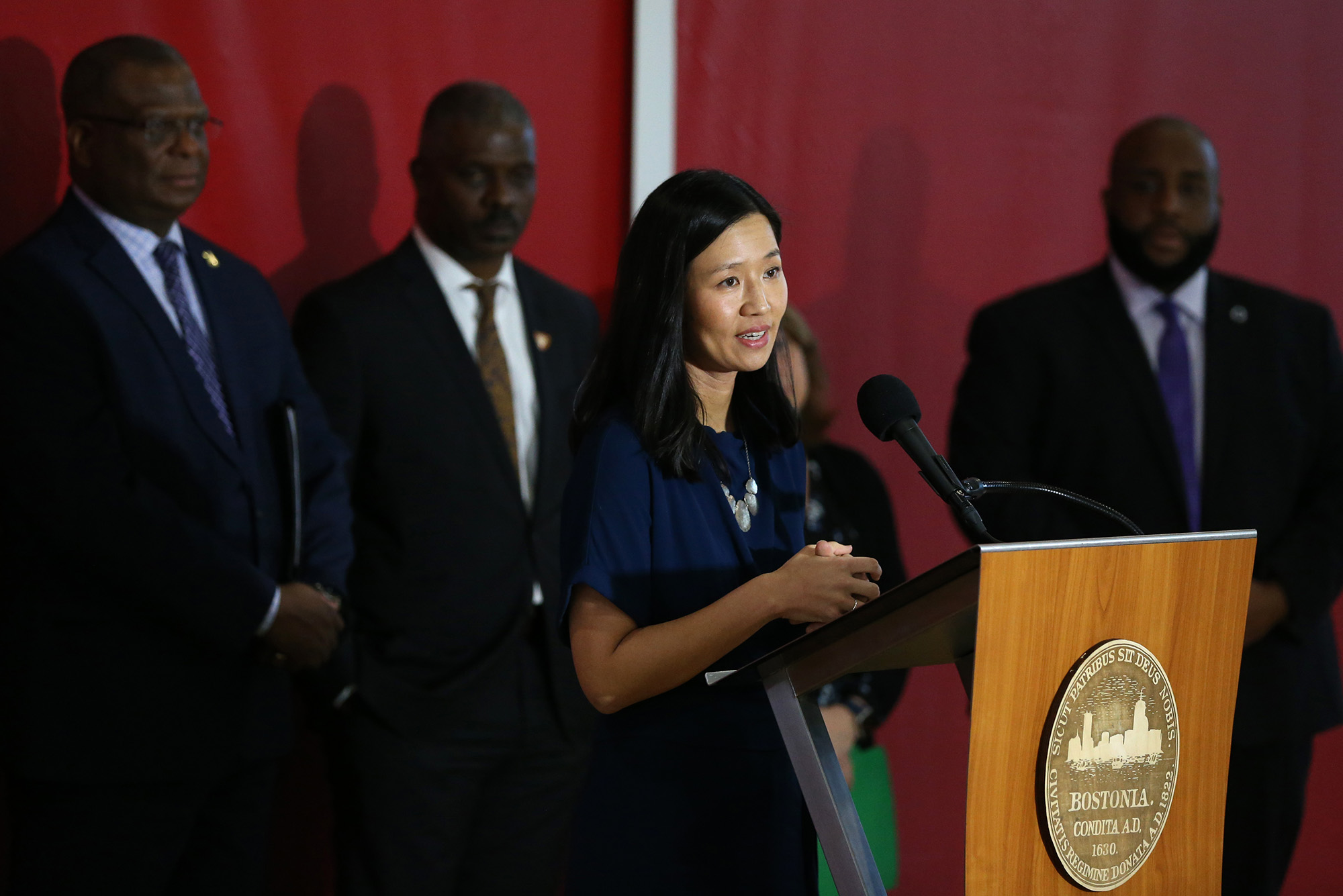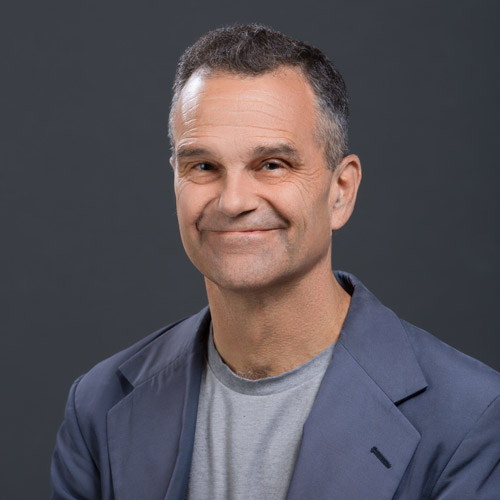Boston’s Declining Murder Rate Lowest among Big US Cities. Is It a Fluke?
BU crime policy expert Shea Cronin on what’s behind the trend

Murder scenes in Boston have been few this year: the city recorded only three killings through May 2024. Photo via iStock/carlballou
Boston’s Declining Murder Rate Lowest among Big US Cities. Is It a Fluke?
BU crime policy expert Shea Cronin on what’s behind the trend
For once, some exuberantly good news: Boston led all other big American cities in declining number of murders during the first quarter of this year.

Homicides plunged 82 percent year-to-year in Beantown, ahead of second-best Philadelphia (37 percent). The trend continued through May, with the city logging just three homicides in 2024, notes Shea Cronin, an assistant professor of criminal justice and chair of applied social sciences at Metropolitan College. In 2023, the city saw a total of 37 murders—and that was a record low.
“We’ve seen declines across lots of cities,” Cronin says, but “Boston is doing incredibly well when it comes to indicators of violence, including murders.”
Last year, Mayor Michelle Wu committed to a violence prevention strategy that aims to cut homicides and shootings by 20 percent by 2026. The tactics include outreach to those involved in gang violence and spending on hospital outreach programs. BU figures in that last one: among the programs cited by the city was the Violence Intervention Advocacy Program (VIAP) at Boston Medical Center, the University’s teaching hospital and New England’s largest safety-net hospital. (BMC’s VIAP trauma counselors provide “emotional first-aid” and logistical/legal help to victims of violence and their families.)
BU Today spoke with Cronin, a crime policy expert, about whether the city’s declining murder rate is sustainable long-term.
This interview has been edited for clarity and brevity.
Q&A
with Shea Cronin
BU Today: Is it too soon to be sure that the steep decline in murders isn’t a fluke, a statistical blip that could be reversed in the future?
Cronin: We’re close to halfway through the year. So that gives me some confidence that we’re seeing a decline that will hold up. But with any given year, homicide data can be subject to some random variation. Seeing it where it is now, compared to where it was last year—and that last year was below average to begin with—I have a lot of confidence that it’s going to hold up in this direction. But it always remains to be seen.
BU Today: What might Boston be doing right?
Cronin: They have coordinated violence prevention and intervention efforts out of the mayor’s office, the Public Health Commission, and the Boston Police Department, and other other agencies. They’ve created a network of centering violence as a public health approach in the well-being of young people—pulling them out of things that can push them towards violence, retaliatory violence, or associating with groups in their neighborhoods that might be engaged in violence. That has also been the work of specific programs that have been in Boston for quite a while, but have been, I think, reinvigorated with the leadership.
We have community-based organizations that work with young people who are truly at risk for perpetrating, or being a victim of, violence. Some of those things are supported by state grants, like the Safe and Successful Youth Initiative [which pairs youth with workers for educational, job, and behavioral health services]. The Shannon Community Safety Initiative [using multiple anti-gang strategies] helps fund a number of youth-based organizations and violence intervention efforts.
BU Today: How do these programs identify youth at risk for violence?
Cronin: A lot of it comes from direct referrals from law enforcement. Some of it comes from the community partners who are working closely with young people.
BU Today: Churches, nonprofits, schools?
Cronin: Yes.
BU Today: Mayor Wu’s year-old initiative cannot be the main driver of this plunging murder rate if these programs have been effective and working in Boston, can it?
Cronin: It’s hard to pin it on any one initiative. Boston has partnerships between community organizations and the police, and has leadership that can coordinate and focus those efforts and empower the community organizations to work with residents in their communities to help address violence there. We’re really seeing a lot of leadership around all of these different initiatives [to] better build their capacity to focus on young people that are truly at risk for violence.
We know that a lot of violence is retaliatory. And this is why you always want to be cautious about violence statistics, because they can start to cycle back up quickly if conflicts begin to emerge and [can] take on a life of their own. There are community responders around those conflicts, and there’s police attention to those conflicts—that’s why we see these dramatic sort of downturns in some of the indicators of violence.
The other things I look at are nonfatal shootings, [which] this year are down from last year quite a bit. Nonfatal shootings [and] aggravated assaults are going down as well—although those numbers are not as encouraging as the homicide statistics—they’re down from last year a little bit. We want to see those declines continue. It’s still very, very encouraging.

BU Today: We know violence spirals in cities during the hot, uncomfortable months of summer. Will this summer be the acid test as to whether we see these heartening trends continue?
Yeah, crime does typically have an association with the seasons. It’s typically the earlier parts of the summer—May, early June, where you would see these increases, [with] young people leaving school and spending more time in their neighborhoods, more time outside in the evenings, more and more interactions between young people.That’s the time period where I think we’re usually more concerned.
BU Today: This heartening decline in murders and violence seems to fly in the face of conventional wisdom that in a country awash in guns, it’s simply impossible to get violent crime under control.
Health care and [harder] accessibility of firearms in Massachusetts help reduce that risk. I’ve done studies with colleagues at the School of Public Health that have shown that Massachusetts attracts guns from other, low [gun] regulation states. [But] the gun laws that we do have in place have been shown to drive down violence. Guns can travel from other states into Massachusetts, but that still means that a young person in Boston, seeking access to a firearm, is going to have a harder time than if they are in a different city that has much more accessible firearms.
I think that the Boston Police Department is focusing on getting possession of illegal firearms. They had 153 gun arrests last year. Some of those come after violence, but a lot of those come through suspicion stops. Boston is trying to do it in as targeted and limited kind of way as possible, informed by data. Boston’s police department has a role in violence [prevention] and working to keep communities safe. As long as they’re doing it in partnership with community organizations, in a data-informed and tailored kind of way, that limits the negative repercussions of enforcement.

Comments & Discussion
Boston University moderates comments to facilitate an informed, substantive, civil conversation. Abusive, profane, self-promotional, misleading, incoherent or off-topic comments will be rejected. Moderators are staffed during regular business hours (EST) and can only accept comments written in English. Statistics or facts must include a citation or a link to the citation.